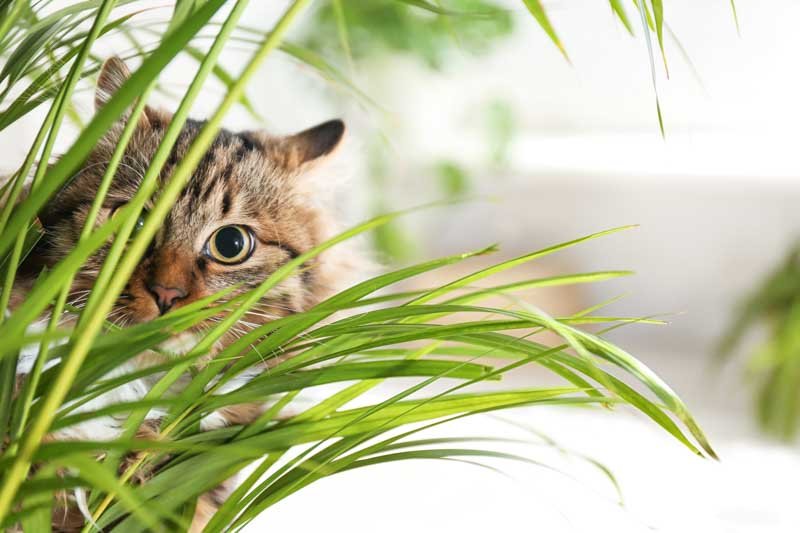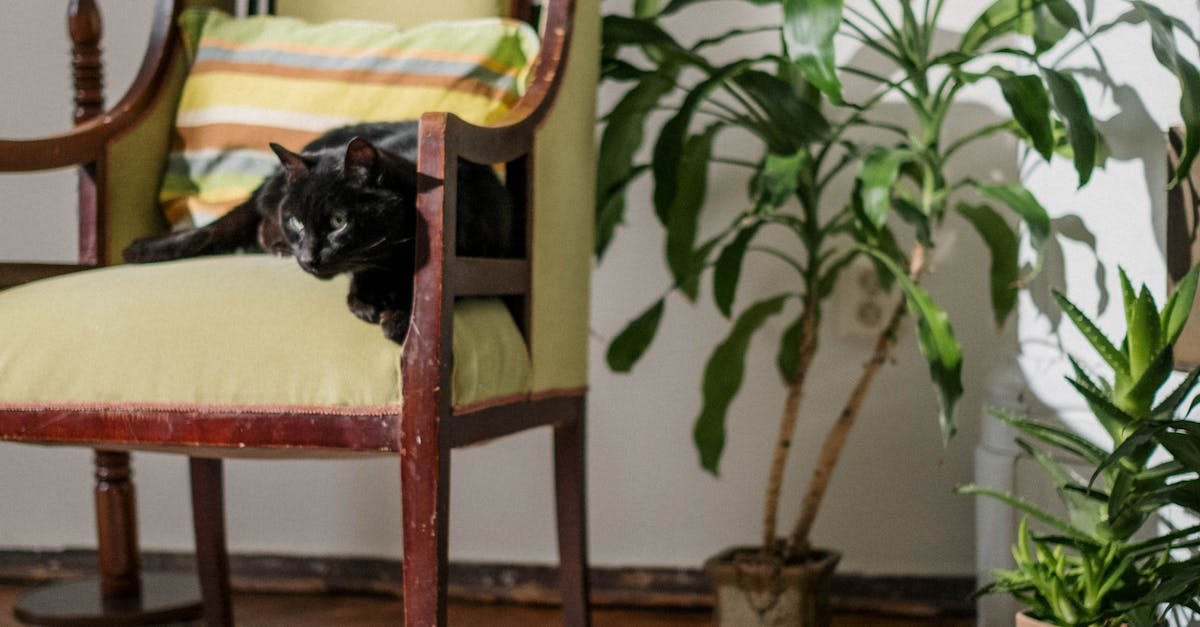
Cat Safe Houseplants – Non-Toxic Indoor Plants for Pet Owners
Estimated reading time: 8 minutes
Cat Safe Houseplants: Key Takeaways
- Over 700 plants are toxic to cats, causing symptoms like vomiting and lethargy (ASPCA).
- Non-toxic plants like Spider Plants and Boston Ferns keep cats safe while purifying air.
- Use deterrents like citrus spray or high placement to prevent chewing.
- Avoid toxic plants like Lilies and Sago Palms, which can be fatal.
- Offer cat grass as a safe alternative for nibbling.
Table of Contents
- Introduction
- Why Choose Cat-Safe Indoor Plants?
- Best Cat-Safe Houseplants
- How to Keep Cats from Eating Plants
- Common Toxic Plants to Avoid
- FAQs About Cat-Safe Houseplants
1. Introduction
You love your cat and your plants, but what if your furry friend nibbles on the wrong leaf? Many common houseplants are toxic to cats, leading to serious health risks. In fact, over 700 plants can harm your feline companion, causing symptoms like vomiting, drooling, and lethargy (ASPCA).
That’s why choosing cat-safe houseplants is essential for pet owners. These non-toxic indoor plants allow your cat to explore safely while keeping your home green and vibrant.
In this guide, we’ll cover:
- The dangers of toxic plants and why non-toxic alternatives matter.
- The best cat-safe houseplants for your home.
- How to keep cats from chewing on plants.
- Common toxic plants to avoid.
- FAQs to help you make informed choices.
Let’s create a pet-friendly indoor jungle!
2. Why Choose Cat-Safe Indoor Plants?
The Risks of Toxic Plants
Many popular houseplants can be deadly to cats. For example:
- Lilies – Even small amounts can cause kidney failure (ASPCA).
- Pothos (Devil’s Ivy) – Leads to oral irritation and swelling (PetMD).
- Sago Palm – Contains toxins that cause liver damage.
Symptoms of poisoning include drooling, vomiting, diarrhea, and lethargy. In severe cases, ingestion can be fatal. For more on emergency care, see our guide on pet first aid.
The Benefits of Non-Toxic Plants
Opting for non-toxic plants for cats and dogs ensures peace of mind. Plus, many safe plants offer extra perks:
- Air purification – Spider Plants remove formaldehyde (NASA Clean Air Study).
- Safe exploration – Cats love to chew and dig; non-toxic plants prevent emergencies.
- Aesthetic appeal – Many pet-safe plants are just as beautiful as toxic ones.
By choosing the right plants, you protect your cat while keeping your home lush and healthy. For more tips on pet-proofing your space, check out our ultimate pet safety guide.
3. Best Cat-Safe Houseplants
Here are the top non-toxic indoor plants that are safe for cats:
1. Spider Plant (Chlorophytum comosum)
- Why it’s great: Hardy, thrives in indirect light, and produces “pups” for easy propagation.
- Bonus: Cleans the air by removing toxins like formaldehyde.
2. Boston Fern (Nephrolepis exaltata)
- Why it’s great: Acts as a natural humidifier and has soft, pet-friendly fronds.
- Care tip: Prefers high humidity and indirect sunlight.
3. Areca Palm (Dypsis lutescens)
- Why it’s great: A tropical beauty that’s safe for pets and purifies the air (ASPCA).
- Care tip: Needs bright, indirect light and regular watering.
4. Calathea (Calathea spp.)
- Why it’s great: Known for its stunning, colorful foliage and non-toxic leaves.
- Care tip: Thrives in low to medium light and high humidity.
5. Pet-Friendly Succulents
Not all succulents are safe, but these are cat-approved:
- Haworthia – Small, low-maintenance, and safe.
- Echeveria – Rosette-shaped and non-toxic (ASPCA).
Avoid: Jade Plants and Aloe Vera, which are toxic to cats. For a deeper dive into toxic plants, explore our pet-friendly gardening guide.
4. How to Keep Cats from Eating Plants
Even safe plants can cause mild stomach upset if eaten in large amounts. Here’s how to keep cats from eating plants:
1. Use Natural Deterrents
- Spray leaves with diluted lemon juice or vinegar (cats dislike citrus).
- Sprinkle cayenne pepper around the base (but avoid direct contact with leaves).
2. Strategic Placement
- Hang plants in macramé holders or place them on high shelves.
- Use terrariums or glass cases to block access.
3. Offer Alternatives
- Grow cat grass (Dactylis glomerata) as a safe chewing option (Cornell University).
- Provide catnip or silver vine as a distraction.
4. Physical Barriers
- Place decorative pebbles on top of the soil to discourage digging.
- Use mesh covers around the plant base.
By combining these methods, you can enjoy your plants without worrying about your cat’s curiosity. For more behavioral tips, read our guide on decoding cat behavior.
5. Common Toxic Plants to Avoid
Some plants are extremely dangerous for cats. Here’s what to keep out of your home:
1. Lilies
- Risk: Even pollen can cause kidney failure.
- Types to avoid: Easter Lily, Tiger Lily, Daylily.
2. Sago Palm
- Risk: All parts are toxic, leading to liver damage.
3. Pothos (Devil’s Ivy)
- Risk: Causes oral irritation, vomiting, and swelling.
4. Aloe Vera
- Risk: Contains saponins, which cause vomiting and diarrhea.
Always check the ASPCA’s toxic plant database before bringing a new plant home. For senior cats, extra caution is needed—learn more in our senior cat health guide.
6. FAQs About Cat-Safe Houseplants
Q1: Are all succulents safe for cats?
A: No—avoid Jade Plants (Crassula ovata) and Aloe Vera. Stick to pet-friendly succulents like Haworthia and Echeveria.
Q2: What if my cat vomits after chewing a safe plant?
A: Some non-toxic plants can still cause mild stomach upset. Monitor your cat, and if symptoms persist, consult a vet.
Q3: Where can I buy verified non-toxic plants?
A: Look for pet-safe labels at local nurseries or shop online at stores like The Sill.
7. Conclusion
Choosing cat-safe houseplants keeps your home beautiful and your pets healthy. By opting for non-toxic varieties like Spider Plants, Boston Ferns, and Areca Palms, you create a safe environment for curious cats.
Remember:
- ✔ Check the ASPCA’s toxic plant list before buying.
- ✔ Use deterrents like citrus spray or high placement.
- ✔ Offer cat grass as a safe alternative.
Share your pet-safe plant setups in the comments below!
